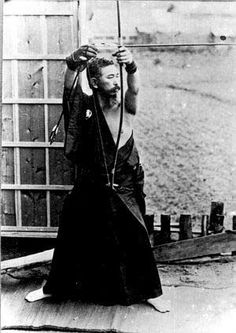Famous Archery Battles in History
Famous Archery Battles in History
A much requested topic has been the most famous archery battles in history. We finally got to work on this vast area of research.
Archery, with its precision and prowess, has left an indelible mark on the pages of history through epic battles that resonate even today. In this exploration of famous archery battles, we delve into the annals of time to uncover the strategic clashes and heroic feats that have shaped civilizations. From the iconic battles of the Hundred Years War where the English longbowman saved the day, to the legendary exploits of the steppe nomads, these moments highlight the pivotal role of archery in historical warfare. Join us as we journey through time to witness the triumphs and tribulations of archers on the battlefield, revealing the enduring legacy of their skill and valor.
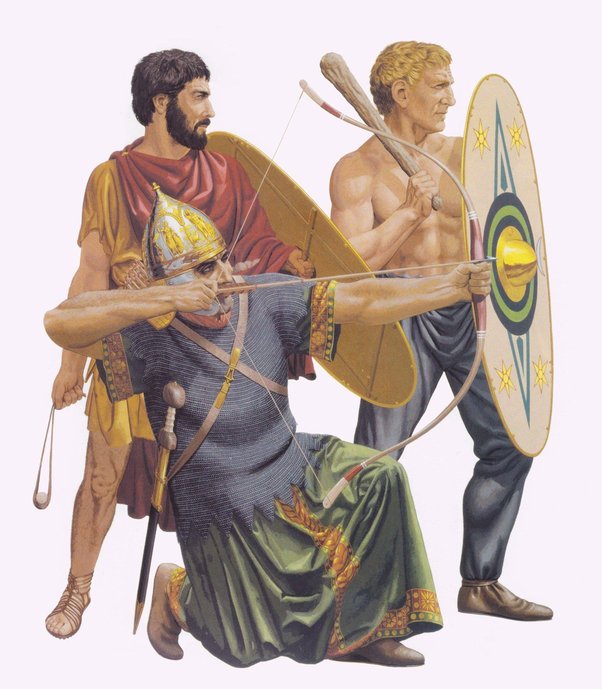
The Role of Archery in Warfare
Archery has long been hailed as a game-changer on the battlefield, wielding unparalleled precision and power that often tipped the scales of victory. In the annals of history, archers played a pivotal role in shaping the outcomes of wars, their skillful marksmanship reshaping landscapes and destinies alike.
Archery’s significance lay not only in its ability to rain arrows upon enemy ranks from a distance but also in its versatility and strategic value. Archers were deployed in various formations, from skirmish lines to fortified positions, allowing commanders to dictate the flow of battle with precision strikes and suppressing fire.
The effectiveness of archery in warfare stemmed from several key factors. Firstly, the range and lethality of bows enabled archers to engage enemy forces from afar, inflicting casualties and sowing chaos before the opposing army could close in for hand-to-hand combat. This gave commanders a crucial advantage in dictating the tempo of engagements and seizing strategic positions.
Moreover, archery required rigorous training and discipline, cultivating a cadre of skilled marksmen capable of delivering devastating volleys with remarkable accuracy. The proficiency of archers was honed through years of practice, ensuring that they could unleash barrages of arrows with deadly efficiency even amidst the chaos of battle.
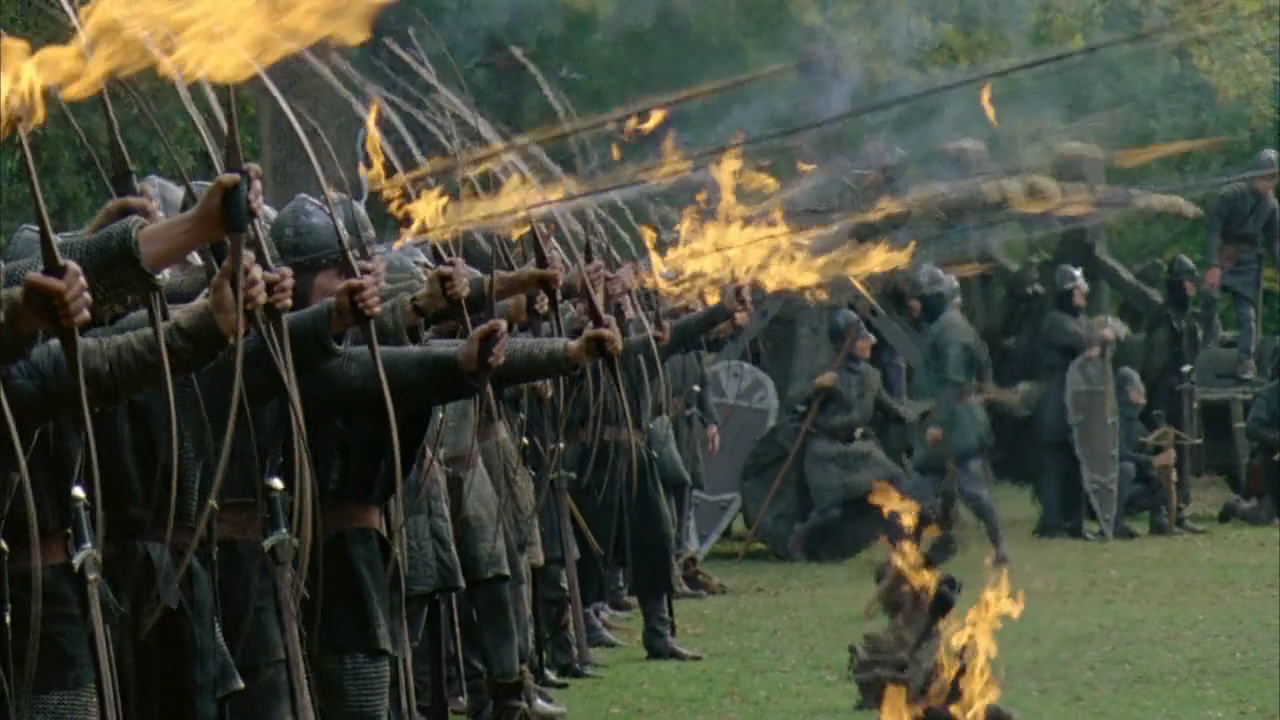
Archers were also adept at adapting to various battlefield scenarios, whether launching ambushes from concealed positions or providing covering fire to support advancing infantry. Their ability to strike from unexpected angles and exploit enemy weaknesses made them invaluable assets on the battlefield, capable of turning the tide of battle with a well-aimed shot.
Which Historic Military Archers are Considered to be the Best?
When exploring the annals of history, certain military archers emerge as legendary figures, renowned for their unparalleled skill and remarkable feats on the battlefield. These archers, revered for their marksmanship and strategic acumen, left an indelible mark on the course of warfare. Let’s delve into the tales of some of history’s greatest military archers, whose prowess with the bow shaped the destinies of nations and earned them a place among the elite. These are fan favorites and we could not include all of the best in an article of this scope.
English Longbowmen:
During the medieval period, English longbowmen gained widespread acclaim for their mastery of the longbow, a weapon that proved decisive in numerous battles, including the iconic Battle of Agincourt. Trained from a young age and possessing formidable strength, English longbowmen could launch arrows with remarkable force and accuracy over long distances, wreaking havoc upon enemy ranks and securing victory for their side.
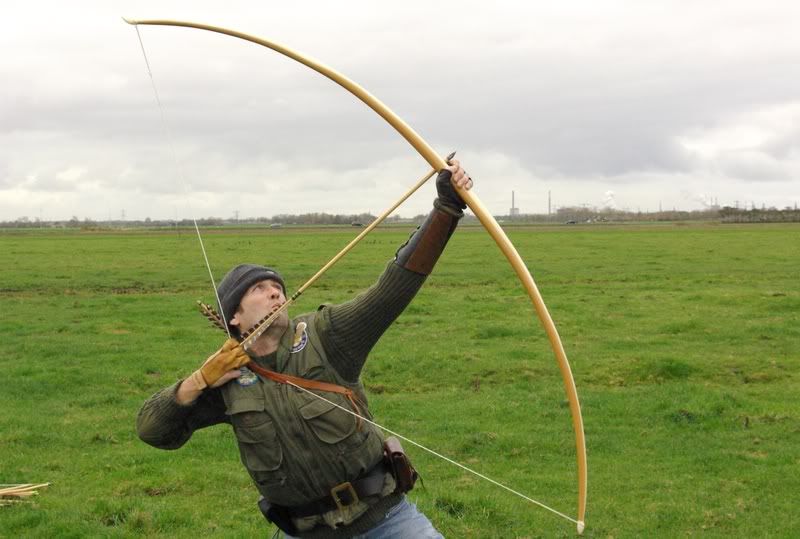
Mongol Horse Archers:
The Mongol Empire, under the leadership of figures like Genghis Khan and his successors, unleashed devastating hordes of horse-mounted archers upon their foes. Renowned for their unparalleled mobility and precision, Mongol horse archers could unleash volleys of arrows while riding at full gallop, striking fear into the hearts of their enemies and conquering vast swathes of territory across Eurasia.
Ottoman Janissary Archers:
In the Ottoman Turkish Empire, the elite Janissary corps included skilled archers who played a crucial role in the empire’s military campaigns. Trained in both traditional archery techniques and firearm usage, Janissary archers combined centuries-old tactics with modern innovations, proving to be formidable adversaries on the battlefield and contributing to the expansion and dominance of the Ottoman Empire.

Japanese Samurai Archers:
In feudal Japan, samurai warriors were not only skilled in swordsmanship but also proficient archers, trained in the art of kyujutsu (Japanese archery). Samurai archers were renowned for their precision and discipline, capable of striking targets with deadly accuracy even from horseback. Their expertise with the bow complemented their martial prowess, making them formidable opponents in both ranged and close-quarters combat.
Assyrian Archers:
The Assyrian Empire of ancient Mesopotamia boasted a formidable military force, including highly skilled archers who played a crucial role in the empire’s conquests. Assyrian archers were trained to proficiency from a young age, honing their marksmanship skills and learning to coordinate with other units to unleash devastating barrages of arrows upon enemy formations. Their disciplined tactics and lethal accuracy made them a formidable force on the battlefield, contributing to the expansion and dominance of the Assyrian Empire.
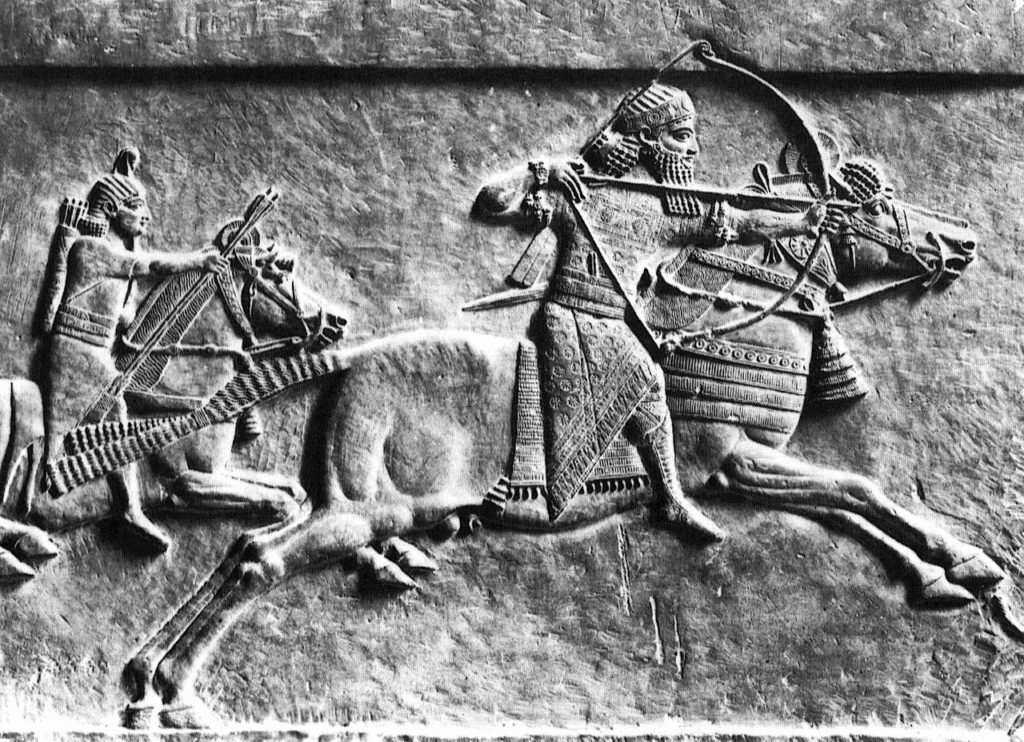
Nubian Archers:
In ancient Nubia, archery played a central role in both hunting and warfare. Nubian archers were renowned for their exceptional skill with the bow, utilizing composite bows made from layers of wood, horn, and sinew to achieve remarkable power and accuracy. Nubian archers often served as mercenaries in the armies of neighboring civilizations, their expertise in archery earning them a reputation as fearsome warriors capable of turning the tide of battle.
These historic military archers, spanning continents and millennia, are celebrated for their exceptional skill, and enduring legacy on the battlefield. Their contributions to the art of archery and the history of warfare serve as a testament to the enduring power of the bow and arrow in shaping the course of human conflict.
Archery Battles
Now for the famous archery battles in history. The list does not include every and all battles. It is well outside the scope of an article such as this. The battles do not appear in any particular order, but were curated to give a wide scope to archery on the battlefield through the millennia. Enjoy.
Famous Archery Battles in History: Battle of Agincourt
The Battle of Agincourt, a defining moment in medieval history, stands as an iconic example of the power of archery on the battlefield. This clash between the English and French forces during the Hundred Years’ War showcased the strategic prowess of English longbowmen, whose skill and precision with the bow proved decisive in securing victory against overwhelming odds. This encounter earns a place in one of the most famous archery battles in history.
Geopolitical Situation:
In 1415, King Henry V of England sought to assert his claim to the French throne, launching an invasion of France amidst the ongoing Hundred Years’ War. Facing off against him was the French army, led by Charles VI, with a significantly larger force at their disposal.
Technicalities of the Battle:
On October 25, 1415, the two armies met near the village of Agincourt in northern France. The English, numbering around 6,000 men, including approximately 5,000 longbowmen, faced a French force estimated to be between 12,000 and 36,000 strong, comprising knights, men-at-arms, and infantry.
As the battle commenced, the English deployed their longbowmen in a carefully constructed defensive formation. Positioned behind wooden stakes and protected by muddy terrain, the archers unleashed a relentless barrage of arrows upon the advancing French forces.
The longbow’s range and accuracy proved devastating, causing chaos and confusion among the French ranks. Despite repeated cavalry charges and infantry assaults, the French struggled to penetrate the English defenses, suffering heavy casualties under the onslaught of arrows.
By the day’s end, the Battle of Agincourt had resulted in a resounding victory for the English. The French suffered staggering losses, with estimates suggesting that thousands of men were killed or captured, including many nobles and knights. In contrast, the English casualties were relatively minimal, securing a decisive triumph against overwhelming odds.
The Battle of Agincourt underscored the critical role of English longbowmen in medieval warfare, demonstrating the devastating impact of skilled archers on the outcome of battles. This historic clash remains a testament to the enduring legacy of archery in shaping the course of history.
Famous Archery Battles in History: The Battle of Crécy
The Battle of Crecy stands as one of the most famous archery battles in history, showcasing the pivotal role of archers on the medieval battlefield. Fought during the Hundred Years’ War between the English and French forces, this clash exemplifies the devastating effectiveness of English longbowmen in securing victory against formidable odds.
Geopolitical Situation:
In 1346, King Edward III of England sought to expand his territories in France, leading to a confrontation with the French army under King Philip VI. The English, bolstered by their longbowmen, faced off against a larger French force near the town of Crecy in northern France.
Technicalities of the Battle:
On August 26, 1346, the two armies clashed in a fierce engagement. The English, numbering around 7,000 to 12,000 men, including approximately 5,000 skilled longbowmen, positioned themselves on advantageous terrain, with their archers forming a formidable defensive line.
As the battle commenced, the English longbowmen unleashed a relentless barrage of arrows upon the advancing French forces. The longbows, with their remarkable range and accuracy, inflicted heavy casualties on the French cavalry and infantry, disrupting their formations and sowing chaos among their ranks.
Despite facing superior numbers and armored knights, the English longbowmen maintained their discipline and continued to rain arrows upon the French, causing widespread devastation and demoralization. The French struggled to mount effective counterattacks, as their cavalry charges faltered under the relentless onslaught of arrows.
Conclusion:
By nightfall, the Battle of Crecy had resulted in a decisive victory for the English. The French suffered heavy losses, including numerous nobles and knights, while the English casualties were comparatively minimal. The triumph of the English longbowmen at Crecy underscored the critical importance of archery in medieval warfare, solidifying their reputation as formidable warriors capable of shaping the course of history.
Famous Archery Battles in History: Battle of Ain Jalut (1260)
Ain Jalut definitely makes the cut for one of the most famous archery battles in history. It featured not one, but two substantial armies, both of which placed heavy emphasis on the mounted archer.
The Battle of Ain Jalut stands as a pivotal moment in history, where the Mamluk Sultanate of Egypt halted the westward expansion of the Mongol Empire, showcasing the resilience and military prowess of the Mamluk forces. This famous archery battle, fought in 1260, highlights the critical role of the Mamluk horse archers in defending against a formidable Mongol invasion.
Geopolitical Situation:
In the 13th century, the Mongol Empire, under the command of Hulagu Khan, sought to extend its dominion into the Middle East, posing a significant threat to the Muslim world. The Mamluk Sultanate, led by Sultan Qutuz, stood as the primary bulwark against Mongol expansion, mobilizing its forces to confront the invading Mongol army near the town of Ain Jalut in present-day Israel.
Technicalities of the Battle:
On September 3, 1260, the Mamluk forces, numbering around 20,000 to 30,000 soldiers, including skilled horse archers, clashed with the Mongol army, which boasted similar numbers. As the battle unfolded, the Mamluk horse archers, renowned for their agility and marksmanship, launched a relentless barrage of arrows upon the Mongol ranks.
The Mamluk horse archers utilized hit-and-run tactics and swift maneuverability to harass the Mongol forces, disrupting their formations and sowing confusion among their ranks. The accurate and coordinated fire of the Mamluk archers inflicted heavy casualties on the Mongol cavalry and infantry, impeding their advance and blunting their momentum.
Despite facing fierce resistance from the Mongols, the Mamluk forces maintained their defensive positions and repelled successive Mongol assaults. The strategic brilliance and steadfast resolve of the Mamluks, coupled with the lethal accuracy of their horse archers, ultimately led to the defeat of the Mongol army.
Conclusion:
The Battle of Ain Jalut stands as a testament to the resilience and valor of the Mamluk Sultanate, which successfully thwarted the Mongol invasion and preserved the independence of the Muslim world. The triumph of the Mamluk horse archers underscored the critical importance of archery in medieval warfare, showcasing its effectiveness in repelling even the most formidable adversaries.
The Battle of Ain Jalut remains a celebrated chapter in history, symbolizing the triumph of courage and determination over overwhelming odds. This famous archery battle serves as a reminder of the enduring legacy of the Mamluk forces and their pivotal role in shaping the course of civilizations.
Famous Archery Battles in History: Battle of Manzikert (1071)
The Battle of Manzikert, fought in 1071, stands as a defining moment in history, marking the clash between the Byzantine Empire and the Seljuk Turks and showcasing the pivotal role of archery in medieval warfare. This famous battle underscored the strategic importance of skilled archers and its impact on the fate of empires.
Geopolitical Situation:
In the 11th century, the Byzantine Empire, under Emperor Romanos IV Diogenes, sought to assert control over Anatolia, facing off against the Seljuk Turks, led by Sultan Alp Arslan. The Seljuk Turks, a formidable force of nomadic warriors, aimed to expand their dominion into Byzantine territory, leading to a decisive confrontation near the town of Manzikert (modern-day Malazgirt, Turkey).
Technicalities of the Battle:
On August 26, 1071, the Byzantine and Seljuk forces clashed in a fierce engagement. The Byzantine army, numbering around 40,000 soldiers, including a significant contingent of heavily armored infantry, faced off against the Seljuk forces, comprising skilled horse archers and light cavalry.
As the battle commenced, the Seljuk horse archers utilized their superior mobility and precision to harass the Byzantine forces, launching volleys of arrows from a distance and disrupting their formations. The Seljuk archers’ hit-and-run tactics proved effective in weakening the Byzantine ranks and sowing confusion among their ranks.
Despite the Byzantine army’s numerical advantage and heavy infantry, the relentless onslaught of Seljuk arrows took a toll on their morale and cohesion. Sultan Alp Arslan’s strategic brilliance and the lethal accuracy of his archers ultimately turned the tide of the battle in favor of the Seljuks, leading to a decisive victory over the Byzantine forces.
Conclusion:
The Battle of Manzikert marked a significant turning point in history, signaling the decline of Byzantine power in Anatolia and the rise of the Seljuk Turks as a dominant force in the region. The triumph of the Seljuk horse archers underscored the critical importance of archery in medieval warfare, showcasing its effectiveness in shaping the outcome of battles and determining the fate of empires.
The Battle of Manzikert remains a seminal event in the annals of military history, highlighting the enduring legacy of skilled archers and their pivotal role in shaping the course of civilizations. This famous archery battle serves as a reminder of the strategic significance of archery and its impact on the rise and fall of empires.
Famous Archery Battles in History: Battle of al-Qādisiyyah (636 CE)
The Battle of al-Qādisiyyah, fought in 636 CE, stands as a momentous clash between the Sassanid Empire and the Arab Muslim forces, marking a pivotal turning point in the history of the Middle East. This famous archery battle exemplifies the strategic importance of skilled archers and their impact on the fate of ancient civilizations.
Geopolitical Situation:
In the 7th century, the Sassanid Empire, a formidable power in the Near East, faced a formidable challenge from the expanding Arab Muslim armies, led by the Rashidun Caliphate. The Sassanids sought to defend their territories and maintain their dominance over the region, leading to a decisive confrontation near the town of al-Qādisiyyah in present-day Iraq.
Technicalities of the Battle:
On the dusty plains of al-Qādisiyyah, the Sassanid forces, comprising heavily armored cavalry and skilled archers, clashed with the Arab Muslim armies, which employed innovative tactics and a formidable cavalry of their own. The Sassanid archers, renowned for their accuracy and discipline, played a crucial role in the defense of their empire.
As the battle unfolded, the Sassanid archers unleashed volleys of arrows upon the advancing Arab Muslim forces, inflicting heavy casualties and disrupting their formations. The Sassanid archers utilized their superior range and marksmanship to target key enemy commanders and weaken the morale of the Arab Muslim troops.
Despite the Sassanid’s initial success in repelling Arab Muslim assaults, the tide of the battle turned against them as the Arab Muslim forces, led by commanders like Sa`d ibn Abi Waqqas, employed strategic maneuvers and exploited weaknesses in the Sassanid defenses. The relentless pressure from the Arab Muslim cavalry eventually overwhelmed the Sassanid forces, leading to a decisive victory for the Rashidun Caliphate.
Conclusion:
The Battle of al-Qādisiyyah marked a significant milestone in the history of the Middle East, signaling the decline of Sassanid power and the ascendancy of the Arab Muslim forces. The triumph of the Arab Muslim armies underscored the critical importance of skilled archers and their strategic impact on the outcome of ancient battles.
The Battle of al-Qādisiyyah remains a pivotal event in the annals of military history, highlighting the enduring legacy of archery and its role in shaping the destiny of ancient civilizations. This famous archery battle serves as a reminder of the pivotal role of skilled archers in ancient warfare and their enduring impact on the course of history.
Famous Archery Battles in History: Battle of Pressburg (907)
Famous Archery Battles in History: The Battle of the Kalka River (1223)
This is another battle which features at least two groups who heavily emphasized archery, namely mounted archery in battles. These being the Cumans and the Mongols. The Battle of the Kalka River, fought in 1223, stands as a momentous clash between the Mongol Empire and an alliance of Kievan Rus’ and Cumans, highlighting the devastating impact of Mongol archery tactics. This famous archery battle underscores the strategic importance of skilled archers and their role in shaping the fate of civilizations.
Geopolitical Situation:
In the early 13th century, the Mongol Empire, under the leadership of Genghis Khan, embarked on a campaign of conquest across Asia and Eastern Europe. The Kievan Rus’ and Cumans, neighboring powers in Eastern Europe, sought to defend their territories against Mongol encroachment, leading to a fateful confrontation near the Kalka River in present-day Ukraine.
Technicalities of the Battle:
On May 31, 1223, the Mongol forces, renowned for their skilled horse archers and tactical prowess, clashed with the Kievan Rus’ and Cuman alliance along the banks of the Kalka River. The Mongol army, numbering several tens of thousands, unleashed a relentless barrage of arrows upon their foes, utilizing hit-and-run tactics and swift maneuverability to outflank and overwhelm the enemy.
The Kievan Rus’ and Cuman forces, though valiant in their defense, struggled to contend with the ferocity and precision of Mongol archery. Despite their numerical advantage, the allied forces found themselves outmatched by the disciplined formations and strategic cunning of the Mongol horsemen.
Conclusion:
The Battle of the Kalka River concluded with a decisive victory for the Mongol forces, resulting in heavy losses for the Kievan Rus’ and Cumans. The devastating effectiveness of Mongol archery tactics solidified their reputation as unrivaled warriors of the steppe and sent shockwaves throughout Eastern Europe.
Famous Archery Battles in History – The Battle of Ankara (1402)
The Battle of Ankara, fought in 1402, stands as a momentous clash between the forces of the Ottoman Empire, led by Sultan Bayezid I, and the Timurid Empire, under the command of Timur, also known as Tamerlane. This famous archery battle epitomizes the struggle for dominance in Anatolia and holds profound historical significance in the annals of Turkish and Central Asian history.
Geopolitical Situation:
In the early 15th century, the Ottoman Empire, under Sultan Bayezid I, sought to expand its territories and consolidate its power in Anatolia and the surrounding regions. However, their ambitions were challenged by the rising Timurid Empire, led by the formidable conqueror Timur, who aimed to assert his authority over the region.
Technicalities of the Battle:
On July 20, 1402, the Ottoman and Timurid forces clashed near Ankara, present-day Turkey, in a pivotal confrontation. The Ottoman army, comprising skilled archers and heavily armored infantry, faced off against the Timurid host, which also included adept archers and formidable cavalry.
As the battle unfolded, both sides unleashed volleys of arrows upon each other, with archery playing a crucial role in the initial stages of the conflict. The Ottoman archers, positioned strategically within their ranks, sought to rain down arrows upon the Timurid forces, aiming to weaken their formations and disrupt their advance.
Despite the valiant efforts of the Ottoman forces, the battle ultimately culminated in a devastating defeat for Sultan Bayezid I and his army. Timur’s strategic brilliance and the lethal accuracy of his archers proved decisive, leading to the capture of Sultan Bayezid I and the collapse of Ottoman authority in Anatolia.
Conclusion:
The Battle of Ankara left an indelible mark on the history of the Ottoman Empire and the broader region, signaling the rise of Timurid dominance in Anatolia and the decline of Ottoman power. The defeat at Ankara underscored the strategic importance of archery in medieval warfare and its decisive impact on the outcome of battles.
This famous archery battle serves as a poignant reminder of the ever-changing fortunes of empires and the enduring legacy of archery in shaping the fate of nations. This confrontation remains etched in the annals of history as a testament to the valor and sacrifice of those who fought on the fields of Anatolia.
Famous Archery Battles in History: The Battle of Carrhae (53 BCE)
The Battle of Carrhae, fought in 53 BCE, stands as a pivotal confrontation between the Roman Republic, led by Marcus Licinius Crassus, and the Parthian Empire, commanded by Surena. This famous archery battle epitomizes the clash of civilizations between Rome and Parthia and holds profound historical significance in the annals of ancient warfare.
Geopolitical Situation:
In the 1st century BCE, the Roman Republic sought to expand its influence into the eastern territories, encountering resistance from the powerful Parthian Empire, which controlled vast swathes of the Near East. The Battle of Carrhae emerged as a critical moment in the struggle for supremacy between Rome and Parthia, with both sides vying for control over the strategic region.
Technicalities of the Battle:
In 53 BCE, the Roman legions, renowned for their disciplined infantry formations, faced off against the Parthian cavalry, including skilled horse archers, near the town of Carrhae in present-day Turkey. The Parthian forces, utilizing hit-and-run tactics and superior mobility, sought to exploit the vulnerabilities of the Roman legions and undermine their advance.
As the battle unfolded, the Parthian horse archers unleashed volleys of arrows upon the Roman ranks, inflicting heavy casualties and sowing chaos within their formations. The Roman legions, unaccustomed to the tactics of Parthian archery, struggled to contend with the relentless barrage of arrows and the swift maneuvers of the Parthian cavalry.
Despite the valiant efforts of the Roman forces, the battle ultimately culminated in a devastating defeat for Marcus Licinius Crassus and his legions. The superior tactics and archery prowess of the Parthian cavalry proved decisive, leading to the capture and death of Crassus and the loss of thousands of Roman soldiers.
Conclusion:
The Battle of Carrhae marked a significant setback for the Roman Republic and a triumph for the Parthian Empire, highlighting the strategic importance of archery in ancient warfare. The defeat at Carrhae underscored the challenges faced by the Roman legions when confronted with the tactics of Parthian horse archers and the need for adaptability in the face of new military threats.
This famous archery battle serves as a poignant reminder of the ever-shifting balance of power in the ancient world and the enduring legacy of archery in shaping the fate of civilizations. The Battle of Carrhae remains etched in the annals of history as a testament to the valor and sacrifice of those who fought on the fields of ancient Mesopotamia.
Famous Archery Battles in History: The Battle of Elephantine (593 BCE)
The Battle of Elephantine, fought in 593 BCE, stands as a significant confrontation between the forces of the Nubian Kingdom of Kush and the invading army of the Egyptian Pharaoh Psamtik II. This famous archery battle exemplifies the struggle for control over the Nile Valley and holds profound historical importance in the annals of ancient Nubian and Egyptian warfare.

Geopolitical Situation:
In the 6th century BCE, the Nubian Kingdom of Kush, situated to the south of Egypt, sought to defend its territories against encroachment from the powerful Egyptian Empire. The Battle of Elephantine emerged as a critical moment in the conflict between Nubia and Egypt, with both sides vying for dominance over the strategic region surrounding the Nile River.
Technicalities of the Battle:
In 593 BCE, the Nubian warriors, renowned for their skilled archers and formidable infantry, clashed with the Egyptian army near the island of Elephantine in Upper Egypt. The Nubian archers, utilizing their mastery of archery techniques and strategic positioning, sought to repel the invading Egyptian forces and defend their homeland.
As the battle ensued, the Nubian archers unleashed volleys of arrows upon the Egyptian ranks, inflicting heavy casualties and disrupting their formations. The Egyptian army, though formidable in its own right, found itself outmatched by the precision and ferocity of the Nubian archery tactics, struggling to maintain cohesion in the face of the relentless Nubian assault.
Despite the valiant efforts of the Egyptian forces, the battle ultimately culminated in a decisive victory for the Nubian Kingdom of Kush. The superior tactics and archery prowess of the Nubian warriors proved instrumental in repelling the Egyptian invasion and securing the sovereignty of their kingdom.
Conclusion:
The Battle of Elephantine marked a significant triumph for the Nubian Kingdom of Kush and a setback for Egyptian expansionism in the region. The defeat at Elephantine underscored the strategic importance of archery in ancient warfare and the prowess of the Nubian archers in defending their homeland against foreign aggression.
Famous Archery Battles in History: Siege of Lachish (701 BCE)
The Siege of Lachish, which occurred in 701 BCE, stands as a defining moment in the military campaigns of the Assyrian Empire under King Sennacherib. This famous siege exemplifies the strategic importance of archery in ancient warfare and holds profound historical significance in the annals of Assyrian conquests.
Geopolitical Situation:
In the 8th century BCE, the Assyrian Empire, under the rule of King Sennacherib, embarked on a series of military campaigns aimed at expanding its territories and exerting dominance over the ancient Near East. The Siege of Lachish emerged as a critical confrontation in the Assyrian conquest of the Kingdom of Judah, situated in present-day Israel.
Technicalities of the Siege:
The city of Lachish, strategically located in the Judean foothills, was a key stronghold of the Kingdom of Judah and a formidable obstacle in the path of Assyrian expansion. The Assyrian army, renowned for its skilled archers and advanced siege tactics, laid siege to Lachish, seeking to conquer the city and assert Assyrian control over the region.
As the siege commenced, Assyrian archers positioned themselves on siege towers and walls, raining down a relentless barrage of arrows upon the defenders of Lachish. The precision and lethality of Assyrian archery tactics proved instrumental in weakening the resolve of the Judean defenders and undermining the city’s defenses.
Despite the valiant efforts of the defenders, the Assyrian siege engines and relentless archery assault eventually breached the walls of Lachish. The city fell to the Assyrian forces after a prolonged siege, marking a significant victory for King Sennacherib and further consolidating Assyrian power in the region.
Conclusion:
The Siege of Lachish stands as a testament to the military prowess of the Assyrian Empire and the decisive impact of archery in ancient siege warfare. The conquest of Lachish underscored the effectiveness of Assyrian archery tactics in overcoming fortified defenses and securing victory on the battlefield.
Famous Archery Battles in History: Battle of Nagashino (1575)
The Battle of Nagashino is a good one to end things for this article. It was a battle decided mostly by firearms. The age of the archer as a decisive element on the battlefield for thousands of years was slowly but surely coming to an end.
The Battle of Nagashino, fought in 1575, stands as a landmark conflict in Japanese history, showcasing the transformative impact of firearms alongside traditional archery tactics. This famous battle epitomizes the clash between old and new military technologies and holds profound significance in the annals of Japanese warfare.
Geopolitical Situation:
In the late 16th century, Japan was embroiled in a period of intense conflict known as the Sengoku period, characterized by feudal warfare and the struggle for supremacy among rival warlords. The Battle of Nagashino emerged as a critical confrontation between the powerful Takeda clan, led by Takeda Katsuyori, and the combined forces of Oda Nobunaga and Tokugawa Ieyasu.
Technicalities of the Battle:
On June 28, 1575, the Takeda army, renowned for its skilled cavalry and traditional archery tactics, faced off against the numerically superior Oda-Tokugawa forces at Nagashino Castle in Mikawa Province. The Takeda cavalry, armed with bows and spears, sought to employ their swift mounted archery attacks to devastating effect against their enemies.
However, the Oda-Tokugawa forces, under the leadership of Oda Nobunaga and Tokugawa Ieyasu, introduced a revolutionary tactic by combining traditional archery with firearms. They constructed fortified wooden stockades, known as “teppōzumi,” behind which musketeers were stationed alongside archers.
As the battle unfolded, the Takeda cavalry launched repeated charges against the Oda-Tokugawa defenses, only to be met with a withering hail of gunfire and arrows. The devastating firepower of the Oda-Tokugawa forces inflicted heavy casualties upon the Takeda cavalry, disrupting their formations and sapping their morale.
Despite the valiant efforts of the Takeda warriors, the battle ultimately culminated in a decisive victory for the Oda-Tokugawa alliance. The innovative combination of archery and firearms proved instrumental in repelling the Takeda onslaught and securing victory for Oda Nobunaga and Tokugawa Ieyasu.
Conclusion:
The Battle of Nagashino marked a turning point in Japanese warfare, demonstrating the effectiveness of firearms alongside traditional archery tactics. The victory of the Oda-Tokugawa forces heralded the ascendancy of Oda Nobunaga and Tokugawa Ieyasu as dominant figures in the unification of Japan and the eventual establishment of the Tokugawa shogunate.
